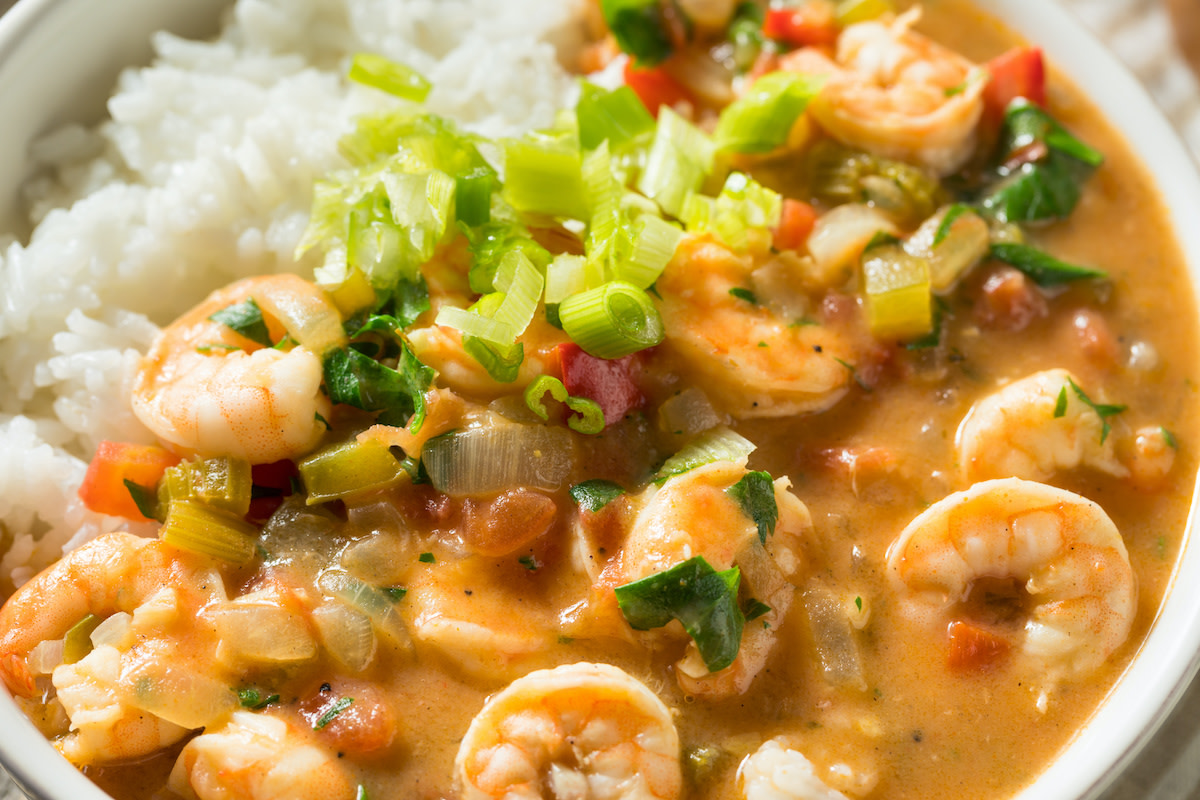Etouffee vs. Gumbo: Differences Between the Bayou Dishes
Written by MasterClass
Last updated: Oct 25, 2021 • 2 min read
Popular New Orleans recipes for Mardi Gras or weeknight dinners, étouffée and gumbo are two rice dishes with deep roots in Creole and Cajun cuisine.
Learn From the Best
What Is Etouffee?
Étouffée (from the French word for “smothered”) is a Cajun and Creole dish consisting of seafood—traditionally shellfish—poached in a light gravy made from seafood stock, garlic cloves, Worcestershire sauce, hot sauce, celery, onions, bell peppers, a roux, and Creole seasonings. To make an étouffée, sauté and simmer the ingredients together over medium heat and serve them over white rice with a garnish of sliced green onion. The dish typically takes thirty minutes of prep time but up to three hours of total time to allow the flavors to mingle and blend.
Popular variations include shrimp étouffée, crawfish étouffée, and chicken étouffée. While often categorized as a stew, étouffée is closer to a light, aromatic gravy built from a roux.
Similar entrées include the Spanish dish paella and other New Orleans bayou dishes such as gumbo, shrimp Creole, and jambalaya.
What Is Gumbo?
Originating in southern Louisiana, gumbo is a thick, flavorful stew consisting of stock, thickener (like a dark roux or dried sassafras leaves, called filé powder), celery, bell peppers, onions, and chicken, shellfish, or andouille sausage. To make Creole gumbo, simmer the ingredients over medium or low heat in a Dutch oven and serve it over white rice, finishing it with chopped parsley or filé garnish.
Many gumbo styles exist, including sausage gumbo, seafood gumbo, and chicken gumbo. Many traditional gumbos, like Chef Mashama Bailey’s gumbo z’herbes recipe, feature okra. The Bantu word for “okra”—“ki ngombo” or “gombo” for short—is one of two possible origins of the Creole word “gumbo”; “kombo,” the Choctaw word for “sassafras,” is a second possibility.
Gumbo is a prime example of the intersection of West African, Native American, and French culinary traditions.
Etouffee vs. Gumbo: What Are the Differences?
Étouffée and gumbo are two popular rice dishes in New Orleans with a few key differences:
- Consistency: The biggest difference between étouffée and gumbo is in the consistency of the finished dish. While both dishes use a broth base—like shrimp stock, crawfish tail stock, or chicken broth—étouffée has a thicker, gravy-like consistency because chefs make it with a roux (a mixture of all-purpose flour and butter). Gumbo, on the other hand, is thinner than étouffée, with a soupy stew broth. Sometimes, cooks will use roux in gumbo recipes but add higher ratios of liquid ingredients to maintain the stew-like consistency.
- Protein: Étouffée proteins are more limited than gumbo—traditional recipes typically only feature shrimp, crawfish, or occasionally chicken. Gumbo has much more variety, and often all in the same dish, combining a mixture of meats like chicken, shellfish, and andouille sausage.
- Flavors: On the surface, étouffée and gumbo have similar flavor profiles because they both incorporate Cajun seasonings (like bay leaves, paprika, and cayenne pepper), the “smothering” technique (or cooking ingredients down in their own juices), and what Cajun and Creole cuisine both call “the Holy Trinity” of diced aromatic veggies: onion, green bell pepper, and celery. However, since étouffée has a blonde roux base, it takes on a lighter, almost sweet flavor compared to gumbo’s deep, savory flavors.
Want to Learn More About Cooking?
Become a better chef with the MasterClass Annual Membership. Gain access to exclusive video lessons taught by the world’s best, including Mashama Bailey, Gabriela Cámara, Niki Nakayama, Chef Thomas Keller, Yotam Ottolenghi, Dominique Ansel, Gordon Ramsay, Alice Waters, and more.
